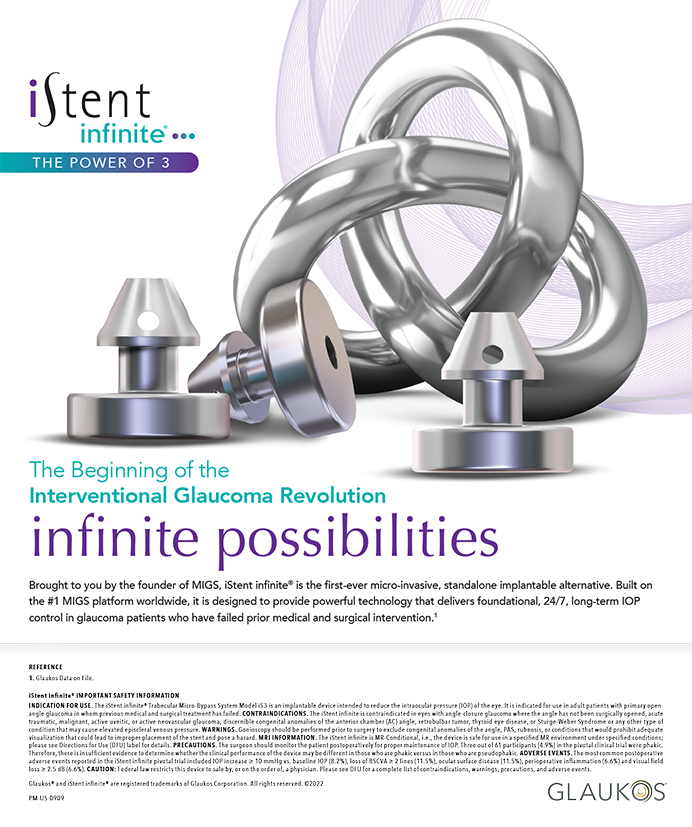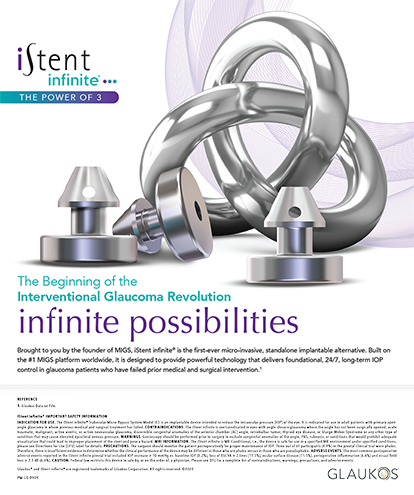Approximately 30 of patients have more than 1.00 D of preexisting astigmatism, but how many of us are addressing astigmatism when we remove a cataract or perform a refractive lens exchange? While surveys indicate many surgeons state that they correct astigmatism, I suspect that a high percentage of them do not do so. If you talk to field representatives from the companies that manufacture IOLs, I think they would estimate that 80 of cataract surgeons do not correct astigmatism when they remove a cataract. In my opinion, the correction of astigmatism is an integral component of modern cataract surgery, and it can be safely and conveniently performed at the time of the cataract removal.
WHY CORRECT ASTIGMATISM?
We surgeons go to great lengths in our IOL calculations. We use equipment like the IOLMaster (Carl Zeiss Meditec, Inc., Dublin, CA) to measure the axial length, we are careful about keratometry (K), and we analyze our outcomes. These measures only address the spherical component of the postoperative refractive error. We need to correct astigmatism as well. Many patients, however, expect emmetropia after standard, traditional cataract surgery. If you perform refractive lens exchange or implant premium IOLs, addressing astigmatism is essential.
Small-incision cataract surgery predictably introduces a relatively small amount of astigmatism. Existing software tools such as www.LRIcalculator.com (Advanced Medical Optics, Inc., Santa Ana, CA) and www.acrysoftoriccalculator.com (Alcon Laboratories, Inc., Fort Worth, TX) on the Web enable you to modify your limbal relaxing incision (LRI) nomogram or your toric IOL calculations, based upon the anticipated flattening of the cornea after cataract surgery. Thus, many cases of cylinder can be addressed intraoperatively.
POSTPONING THE CORRECTION
The most precise method for addressing astigmatism is laser vision correction after healing has occurred from the cataract surgery, but it is also the most expensive technique and requires two surgical events. Nonetheless, patients achieve refractive stability more quickly after cataract surgery without LRIs. In addition, delaying astigmatic correction for a separate procedure allows you to address any residual spherical refractive error.
For these reasons, some surgeons plan to perform laser vision correction after cataract surgery, especially for cases of high astigmatism or when the chances of a refractive miss are high, as might be the case with extremes in axial length.
EXCLUDING ECTATIC AND/OR IRREGULAR CORNEAS
Irregular corneas or those with ectasia should not receive treatment of their astigmatism. Figure 1 demonstrates a topography that is relatively normal on the surface, but this unadulterated cornea is 390 ?m thick at its thinnest point. Figure 2 shows another cornea that has a normal range of automated Ks but clearly has an abnormal topography. Figure 3 shows an eye that has mild inferior steepening but a very abnormal posterior float. Corneas such as these have an elevated risk of ectasia with LASIK or LRIs and should be identified preoperatively.
NOMOGRAMS BASED ON ARC VERSUS CORD LENGTH
The effect of an arcuate incision on the cornea relates to its distance and length from the center of the cornea. In a small eye, because the incision is closer to the cornea than in a large eye, any given cord length of an incision will achieve more effect. On the other hand, the degree of arc-based nomograms (eg, 30° or 45°) automatically correct for this phenomenon, because the length of the incision subtending a certain number degrees of arc shortens as it moves closer to the center of the cornea. One drawback for LRIs based on degree of arc is that their nomograms tend to be complicated.
Nomograms based on cord length have the advantage of relative simplicity, but care must be exercised in small eyes to avoid over-corrections. Once again, this is because a 6-mm cord-length incision in a small eye would subtend a much larger angle than it would in a large eye. You can, however, get very good results with nomograms based on cord length.
TORIC IOLS
The advantage of toric IOLs is that they can correct cylinder and sphere simultaneously, potentially with greater accuracy than an LRI. You do not have to make any extra corneal incisions, and you can avoid the neurotrophia potentially associated with long corneal incisions. The lenses approved in the US, however, are available in a limited range of powers. Furthermore, a misalignment of the astigmatic axis of a toric IOL will reduce the effect.
I would recommend against toric IOLs in eyes with zonular dehiscence, weak zonules, and pseudoexfoliation because of the high risk of the lens' dislocation.
CONCLUSION
Astigmatic management will play an increasing role in cataract surgery as patients come to expect independence from glasses postoperatively. With premium IOL surgery, the need to address astigmatism is even more important. Familiarity with these techniques will help us meet the rising expectations of our patients.
Steven J. Dell, MD, is Medical Director of Dell Laser Consultants and Director of Refractive and Corneal Surgery for Texan Eye in Austin. He is a consultant to Advanced Medical Optics, Inc., Eyeonics, Inc., and Allergan, Inc. Dr. Dell may be reached at (512) 327-7000.


